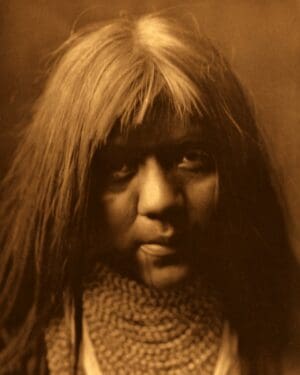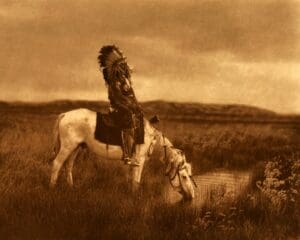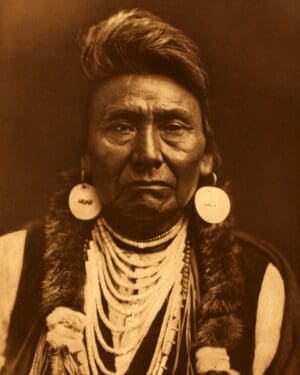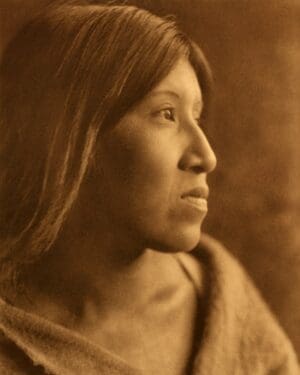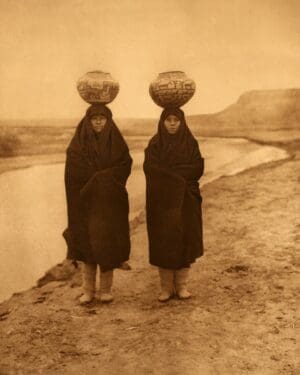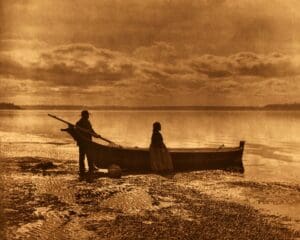Quechan / Yuma Native Americans
Quechan / Yuma Indian Photos by Edward S. Curtis
Tribal Summary
Dress
The climate of the Yuma country being extremely mild, little clothing was needed; for the men a skin loin-cloth, and, as a protection from the rare cold weather, a robe, such as is common to many southern tribes, made of rabbit or rat skins. Moccasins were not worn, and the old Indians insist that sandals, which they now sometimes wear, were probably unknown until the coming of the Spaniards. It is, however, more than likely that they had sandals woven of yucca fiber previous to the rawhide sandals worn after the coming of the horse. The primitive dress of the women was a very short double apron of bark. Later this became a short skirt reaching to the knee. The change from a practically nude state to the present one of extreme modesty in dress has been one of almost a single bound. They now wear a loose skirt, reaching to the ground, and a waist fitting fairly close to their ample form. The material of the dress is of such doth as appeals to the primitive eye; it is cut after a pattern of their own and is quite distinctive. They wear the hair loose and flowing, keeping it clean and glossy by occasionally plastering the head with a mixture of mesquite gum and clay, which is left on for a few days and then washed off, leaving it black and lustrous. The men wear their hair in plaits or rope-like strings, the latter held together with mesquite gum.
Dwelling
The present house is rectangular, with a flat roof of brush and mud supported by heavy posts and cross-beams. The walls are formed by fastening poles horizontally both inside and outside of the upright posts and filling the intervening space with mud. The original Mohave house was conical, and consisted of an excavation three or four feet deep, walled and roofed with saplings, brush, and mud.
Food
Mesquite and screw-bean pods, corn, pumpkins, squashes, beans, rabbits, deer, fish, and aquatic birds.
Showing all 2 results

